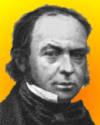
On 9 Apr 1806, the great Victorian civil and mechanical engineer, Isambard Kingdom Brunel was born. His life was one of great originality and productivity on many notable projects. In 1823, he began work with his father, Marc Brunel, on the Thames Tunnel, and later became the resident engineer at the site.
In 1829, Isambard designed a suspension bridge to cross the River Avon at Clifton. In 1831, he was appointed chief engineer at the Bristol Docks, and Brunel later designed the Monkwearmouth Docks and others at Plymouth, Cardiff, Brentford and Milford Haven. In 1833, age 27, he was appointed chief engineer of the Great Western Railway, the line that linked London to Bristol. He went on to build more bridges, viaducts, and three steam ships.
A passenger on board the the first voyage of the Steam-ship Great Western, sailing from Bristol to New York, April, 1838, kept a journal. It was published in an American newspaper, and so it survives for us to read. Share the excitement he felt, and the interesting story he tells, in his Journal Of the First Voyage of the Steam-ship Great Western, April 1838.

On 9 Apr 1806, Isambard Kingdom Brunel was born, rightly admired as one of the greatest of all engineers. His leading role in the transport revolution of the nineteenth century, left an indelible mark on the British landscapeand engineering history. His projects included railways, tunnels, bridges, and great steamships. If you know little about this astonishingly productive Victorian, it is time to remedy that! Today's book pick is: Brunel: The Life and Times of Isambard Kingdom Brunel, by Angus Buchanan, who, as Emeritus Professor of the History of Technology at the University of Bath, is well-qualified to spellbind you with Brunel’s ebullience, foresight, hard work and ambition.
It is available from Amazon, typically about New from $389.99. Used from $2.96. (As of earlier time of writing - subject to change.)
 | While electric railroading is perhaps the most important branch of electrical engineering, at least as regards commercial importance, considering the amount capital invested therein, nevertheless it is a remarkable fact that while most other branches of electrical engineering had been developed to a very high degree of perfection, even a few years ago theoretical investigation of electric railroading was still conspicuous by its almost entire absence. All the work was done by some kind of empirical experimenting, that is, some kind of motor was fitted up with some gearing or some sort of railway car, and then run, and if the motor burned out frequently it was replaced with a larger motor, and if it did not burn out, a trailer was put on the car, and perhaps a second trailer, until the increase of the expense account in burn-outs of the motors balanced the increased carrying capacity of the train. |
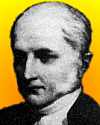 | I had come to the conclusion, that the principal alimentary matters might be reduced to the three great classes, namely the saccharine, the oily and the albuminous. |
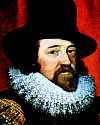 | Truth more easily comes out of error than out of confusion. |
| Before you look at today's web page, see if you can answer some of these questions about the events that happened on this day. Some of the names are very familiar. Others will likely stump you. Tickle your curiosity with these questions, then check your answers on today's web page. | |
| Births | |
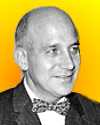 | J. Presper Eckert, Jr., born 9 Apr 1919, was an American engineer and co-inventor of the first general-purpose electronic computer, a digital machine that was the prototype for most computers in use today. In 1946, Eckert with John W. Mauchly fulfilled a government contract to build a digital computer to be used by the U.S. Army for military calculations. What was this computer named? |
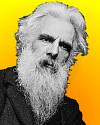 | Eadweard Muybridge, an English photographer, born 9 Apr 1830, is remembered for his pioneering work in photographic studies of motion. One notable example is his series of photographs of a running horse which answered what had been a hotly debated issue. What question about a horse's gait did Muybridge solve? |
 | Isambard Kingdom Brunel, an English civil and mechanical engineer, born 9 Apr 1806, had great originality and was highly productive. His outstanding projects include railways, tunnels, bridges, viaducts and steamships (including the first transatlantic steamer). His largest steamship was used to lay a transatlantic telegraph cable. What was the name of Brunel’s largest steamship? |
| Deaths | |
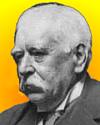 | Sir Patrick Manson (1844-1922) was a Scottish parasitologist who founded the field of tropical medicine developing it as a distinct field of study. He was the first to discover (1877-79) that an insect can be host to a developing parasite (the worm Filaria bancrofti) that is the cause of a human disease (filariasis, which occurs when the worms invade body tissues). What insect did Manson identify as the host for spreading this parasitic worm? |
| Events | |
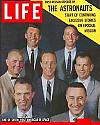 | In 1959, NASA announced the selection of America’s first seven astronauts for project Mercury that had been chosen from 110 applicants. Project Mercury, NASA's first high profile program, was an effort to learn if humans could survive in space. NASA required astronaut candidates to be male, not over 40 years old, not more than 5' 11" height and in excellent physical condition. One of them became the first American in space in 1961. What are the names of two of these famous astronauts? Or, try for all seven names. |
Fast answers for the previous newsletter for April 8: radioactive isotope carbon-14 as a tracer • the pituitary • Otis traveled upward on a demonstration elevator, and at top called for the elevator’s cable to be suddenly cut with an axe. • 3D motion picture, viewed wearing spectacles with one red and one green lens to produce the illusion of depth • largest sunspot group ever on record.
 If you enjoy this newsletter, the website, or wish to offer encouragement or ideas, please send feedback by using your mail reader Reply button.
If you enjoy this newsletter, the website, or wish to offer encouragement or ideas, please send feedback by using your mail reader Reply button. Your click on a Facebook, StumbleUpon, or other social button on the site webpages is also a welcome sign of appreciation. Thank you for using them.
© This newsletter is copyright 2020 by todayinsci.com. Please respect the Webmaster's wishes and do not put copies online of the Newsletter — or any Today in Science History webpage. (If you already have done so, please remove them. Thank you.) Offline use in education is encouraged such as a printout on a bulletin board, or projected for classroom viewing. Online, descriptive links to our pages are welcomed, as these will provide a reader with the most recent revisions, additions and/or corrections of a webpage. For any other copyright questions, please contact the Webmaster by using your mail reader Reply button.
--
If you do not want to receive any more newsletters, Unsubscribe
To update your preferences and to unsubscribe visit this link
Executive Real Estate Business Class
-
"It was like a man with wings. It wasn't like anything you'd see on TV or in a monster movie." ...
About the publisher
Search This Blog
Blog Archive
-
▼
2021
(585)
-
▼
April
(57)
- On This Day for April 30 - George Washington inaug...
- Newsletter for Friday 30 April.
- On This Day for April 29 - British royal wedding, ...
- Newsletter for Thursday 29 April.
- On This Day for April 28 - Benito Mussolini execut...
- Newsletter for Wednesday 28 April.
- On This Day for April 27 - Independence for Sierra...
- Newsletter for Tuesday 27 April.
- On This Day for April 26 - Chernobyl nuclear accid...
- Newsletter for Monday 26 April.
- On This Day for April 25 - Hubble Space Telescope ...
- See How They Tracked Down Bin Laden
- Newsletter for Sunday 25 April.
- On This Day for April 24 - Installation of Pope Be...
- Newsletter for Saturday 24 April.
- On This Day for April 23 - Voting for Eritrea's in...
- Earth Day Bonus: Become a Climate Action Expert
- On This Day for April 22 - First Earth Day, Miguel...
- On This Day for April 21 - French elections held, ...
- Newsletter for Wednesday 21 April.
- On This Day for April 20 - Explosion on the Deepwa...
- Newsletter for Tuesday 20 April.
- On This Day for April 19 - American Revolution beg...
- Newsletter for Monday 19 April.
- On This Day for April 18 - The midnight ride of Pa...
- Newsletter for Sunday 18 April.
- On This Day for April 17 - Canada Act proclaimed, ...
- Newsletter for Saturday 17 April.
- On This Day for April 16 - Harriet Quimby's flight...
- Newsletter for Friday 16 April.
- On This Day for April 15 - Sinking of the Titanic,...
- Newsletter for Thursday 15 April.
- On This Day for April 14 - Abraham Lincoln shot, J...
- On This Day for April 13 - Alfred Dreyfus imprison...
- Newsletter for Tuesday 13 April.
- On This Day for April 12 - Launch of first space s...
- Newsletter for Monday 12 April.
- John of Gaunt: father of England’s medieval monarchy
- On This Day for April 11 - Napoleon's abdication a...
- Newsletter for Sunday 11 April.
- On This Day for April 10 - Anschluss approved in A...
- On This Day for April 9 - Fall of Baghdad, Jørn Ut...
- Newsletter for Friday 9 April.
- On This Day for April 8 - Celebration of the Buddh...
- On This Day for April 7 - Jack Nicklaus's first Ma...
- Newsletter for Wednesday 7 April.
- On This Day for April 6 - Olympics revived, Raphae...
- On This Day for April 5 - Battle of Maipú, Colin P...
- The history and origins of Easter
- On This Day for April 4 - Martin Luther King, Jr.,...
- Newsletter for Sunday 4 April.
- On This Day for April 3 - Implementation of the Ma...
- Newsletter for Saturday 3 April.
- On This Day for April 2 - Death of Pope John Paul ...
- Newsletter for Friday 2 April.
- On This Day for April 1 - Creation of Nunavut, Ser...
- Newsletter for Thursday 1 April.
-
▼
April
(57)
-
Blogroll
-
About
HistoryFact










0 comments:
Post a Comment